Regional News
Bangkok’s Ghost Tower “Sathorn Unique” Haunts Bangkok 20 Years after Financial Crisis
BANGKOK – The 49-story Bangkok high-rise was supposed to feature luxury condos for hundreds of newly affluent Thai families, but it was abandoned unfinished when the Asian financial crisis struck in 1997.
Now called the “Ghost Tower,” it’s a monument to mistakes made and an object of curiosity to a steady stream of visitors.
“Sathorn Unique,” named after the up-and-coming neighborhood next to the Chao Phraya river it towers over, draws dozens of foreigners daily who come to gawk at the decrepit, stained concrete edifice. It’s a home not to Thai yuppies, but to bats, birds, weeds, trees and a black-and-white spotted cat, seen prowling one afternoon on a seventh floor balcony.
“The only way is up,” reads graffiti scrawled in chalk on the fifth floor landing, an ironic reminder of the building’s aspirational past.

–
Near the building’s entrance sits a ramshackle homemade spirit shrine. A yellowing poster of Thailand’s late king, clad in royal regalia, is plastered above ashes of spent incense and opened bottles of fruity Red Fanta – the ghosts’ favorite drink, according to watchman Suwaschai Dadaelor.
In the booming 90s, Bangkok’s skyline was surging skyward and studded with construction cranes.
Architect and property developer Rangsan Torsuwan was flush with cash from selling ornate, high-rise condos along the beach in Pattaya. He drew up blueprints, cleared the land and made millions of dollars pre-selling the condos.
Then came what Thais call the “Tom Yum Goong” crash – referring to the famous local sour and spicy soup. It started in Thailand when the over-leveraged government unexpectedly devalued the baht. Investors rushed to pull their money out as quickly as they could, setting off a regional financial crisis.
About 500 big construction projects – from shopping malls to elevated railways – came to a screeching halt. Some later resumed, but not this one.
At 185 meters (607 feet), the structure is among the tallest abandoned skyscrapers in the world, after North Korea’s 105-story Ryugyong Hotel, which has been under construction since 1987.
In the Ghost Tower’s heyday, hundreds of tourists flocked daily to the urban ruin, paying a 200-baht ($6) bribe to stumble over piles of bricks and bags of cement to stage photo and YouTube shoots and hold boozy parties on the rooftop.
“The photos look so dope,” said Sorcha O’Malley, a tourist from Ireland spotted one afternoon snapping pictures from a side alley. She looks up. “I really want a photo up there, you know?”
“Even when I walking here my heart was kind of pumping already,” German visitor Annikha Mahnke chimes in. “It’s such a big adventure to go up there.”
–
In April 2015, two 20-something parkour runners posted videos of themselves on YouTube ducking and weaving through the building, somersaulting off columns and dangling off balconies. Their footage went viral, drawing thrill-seekers and urban explorers.
For Rangsan’s son Pansit, who now is in charge of the building, that was the last straw. He locked up the stairwells.
“I only feel worry,” he said. “This is not a complete construction, and it’s very dangerous to let people to go up there.”
A few years ago, a 30-year-old Swedish man, Stig Johan Kristian Hammarsten, hanged himself on the 43rd floor. His rotting corpse was discovered weeks later, cementing the building’s reputation as a “ghost tower.”
“Pray to the spirits,” pulsates in neon orange spray paint, in Thai, on the 43rd floor.
Suwaschai, the guard, said he pays his respects daily to appease the ghosts that haunt him at night. One peered at him from behind a column, he says, a shadowy, powerfully built laborer with slick black hair wearing nothing but a loincloth. Another grabbed and levitated his body once when he was sick.
A Thai-Taiwanese couple stopped by to take selfies in an elevator shaft, and found other faces in the photos, Suwaschai said, pointing insistently to shadowy figures in a picture’s background. “This is a true story, I’m not making stuff up.”
A famous cinema was razed to make way for Rangsan’s folly, but rumors that it was built on an ancient cemetery have added to its mystique.
The property has been mired in a complex lawsuit for years and it looks unlikely anyone will demolish it anytime soon. Inspectors say the reinforced concrete structure is still fundamentally sound despite weathering decades of storms.

–
For now it serves as a support for two, 18-story billboards: one advertising Coke and the other the iPhone 7.
For Thais, the tower is a reminder of lessons learned.
On one recent February afternoon, a crowd gathered on the Ghost Tower’s ground floor for a seminar. The topic: The tower, the financial crisis and the 20 years since.
“This building is important because it is a symbol,” said Rames Promyen, director at the National Discovery Museum Institute.
“It serves as a reminder to ourselves – a reminder of how to better prepare for future crises, and how to strengthen ourselves.”
By Drake Kang – Associated Press

Regional News
Thai Immigration Police Detain Over 26,000 Illegal Migrant Workers
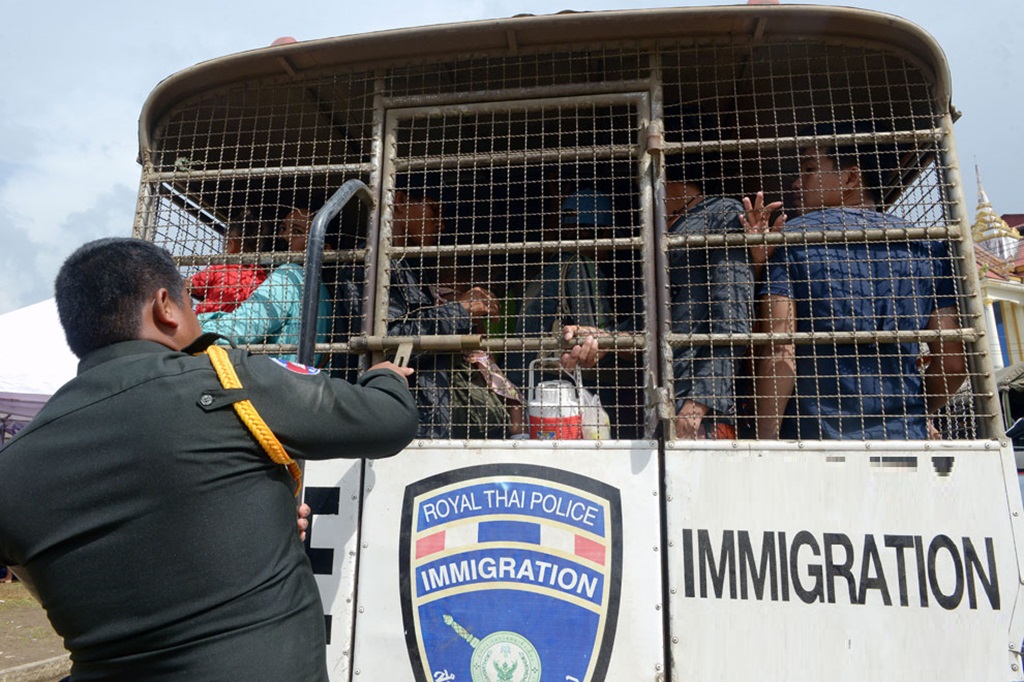
Thailand’s Immigration Police have detained approximately 26,000 illegal migrant workers from Laos, Myanmar, and Cambodia during an eight-day operation in Bangkok and surrounding regions, according to a Royal Thai Police spokesperson.
Mr Adisorn Keudmeuangkhon of the Bangkok-based Migrant Working Group said the drive was in response to an increasing number of concerns about an influx of illegal migrant labor.
“Some Thai people see that many illegal workers are competing for their job positions in the past few months,” he told me. “That’s why the ministry has to take tougher action.”
Civil strife in Myanmar and the recent implementation of a military conscription have driven thousands of Burmese into Thailand, while severe inflation and limited job opportunities in Laos have also encouraged an influx of workers from that country.
Between June 5 and 12, officials detained and checked 20,111 Myanmar laborers, 1,659 Laotian migrant workers, and 3,971 Cambodian workers, according to the Ministry of Labor.
It marked the start of a 120-day campaign to audit workplaces and arrest unlawful migrant workers, according to the government.
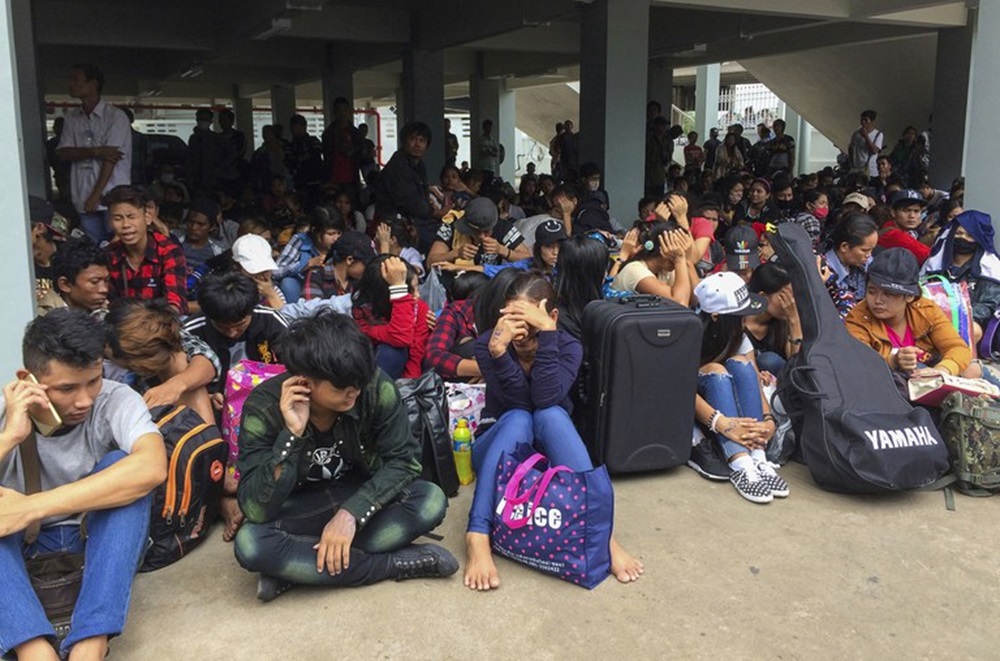
Migrant Workers to be Deported
According to Keudmeuangkhon, undocumented workers face fines ranging from 5,000 to 50,000 Thai baht (US $136 to $1,365), deportation, and a two-year prohibition on re-entering Thailand.
Authorities did not intend to file criminal charges, he claimed.
Authorities raided 1,774 workplaces, according to Moe Gyo, chairman of the Joint Action Committee on Burmese Affairs, which advocates for Myanmar labor rights.
He stated that since the military junta activated conscription, there has been an upsurge in the number of arrests of Myanmar citizens in Thailand who do not have a work permit identity card.
All men aged 18 to 35 and women aged 18 to 27 must serve in the military for at least two years. The first group of 5,000 conscripts summoned by Myanmar’s junta will start duty at the end of this month, military sources told AFP on Monday.
According to Keudmeuangkhon, the bulk of Lao migrant workers in Thailand work as fresh market shopkeepers, restaurant servers, and mall salespeople.
Most people visit Thailand as part of ASEAN’s visa-free policy for tourists, but they stay longer than the 30-day restriction once they find job.
“Employers like to hire Lao migrant workers in the service sector because they can speak fluent Thai,” he told me.
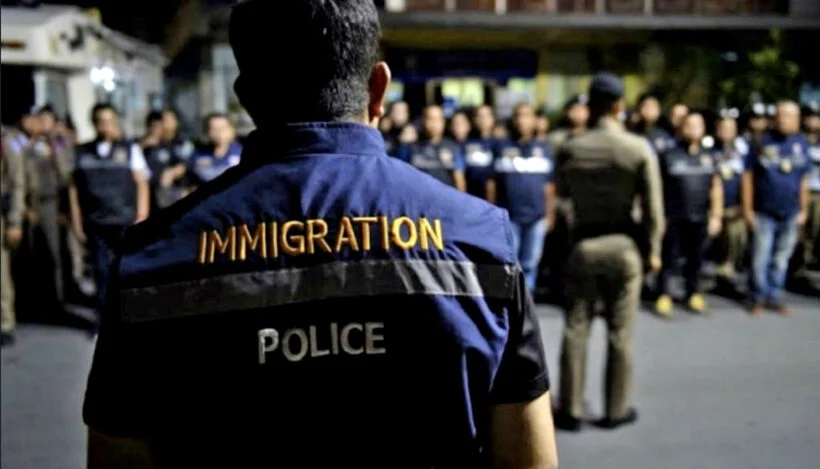
Immigration Police Detain Illegal Migrant Workers
The Thai Cabinet may approve an enhanced program for Thai employers to register their unauthorized foreign workers in July or August. Keudmeuangkhon explained.
Last month, the Thai Ministry of Labor’s Foreign Workers Administration office announced that 268,465 Lao migrant workers were officially working in Thailand.
Baykham Kattiya, Lao Minister of Labor, told Radio Free Asia earlier this month that there are 415,956 migrant workers in other nations, the majority of whom work in Thailand.
According to her, the Lao government believes that over 203,000 persons working outside of the nation lack proper work documents.
However, a Lao official familiar with the labor industry informed Radio Free Asia, a BenarNews-affiliated news station, on June 20 that the number of illegal Lao migrant workers in Thailand and abroad is likely significantly greater.
“They go to other countries as illegal migrant workers through different types of methods – as tourists or students,” said the politician. “Thus, it is hard for the immigration police to collect data on these people.”
Government Officials Responsible for Smuggling in Migrant Workers
Government Officials Responsible for Smuggling in Migrant Workers
News
High School Student Dies After Being Electrocuted By School Water Dispenser
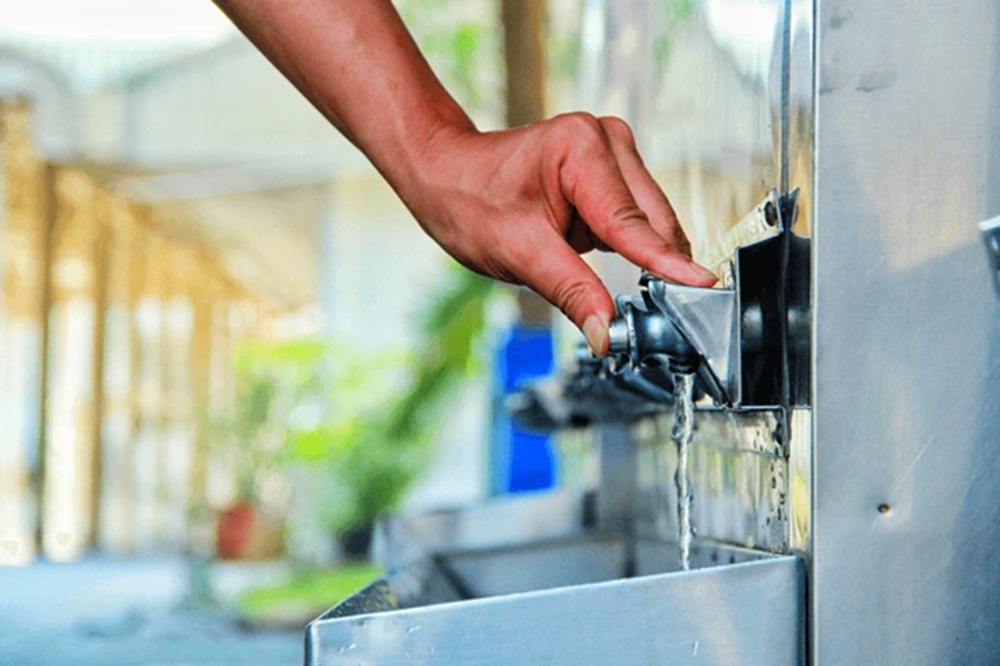
Thailand’s Office of Basic Education Commission has initiated an investigation into the electrocution of a 14-year-old student by a water dispenser in a high school. The event happened at noon on Friday, during the high school’s sports day. The victim was a Grade 8 student.
According to local media in Trang Province, the incident occurred when a teacher instructed the pupil to turn off a water dispenser amid a heavy rain.
According to a witness, the child collapsed while strolling with his friend near a water station. The friend claimed he attempted to assist but was also shocked by electricity.
According to reports, the friend then recovered, left the site, and requested assistance from teachers. A teacher ran to the scene and used a towel to pull the boy away by the ankle. He was taken to the hospital, but it was too late, they claimed.
The event sparked criticism from parents and netizens over school safety, as well as the slow response to aid the young youngster.
Mr. Chainarong Changrua, head of Trang-Krabi’s Secondary Educational Service Area Office, told local media on Sunday that forensic officers from Trang Provincial Police had visited the area. They discovered the blown breaker switch behind the water dispenser, he explained.
The breaker was burned out, thus the authorities assumed the disaster was caused by a short circuit that allowed energy to spill to a neighboring power pole. The student also appeared wet and was not wearing shoes when electrocuted.
According to the Office of Basic Education Commission, a probe team will complete its investigation this week.
The student’s father, Mr Pornchai Thepsuwan, 53, claimed he was saddened when he saw his son’s body. The boy (Wayu), was the youngest of two boys, he explained. He stated that following the tragedy, the school director and staff gave financial assistance to the families.
Mr Pornchai also said he would not seek charges against the institution because he believed it was an accident.
Electrical accidents in Thailand
Electrocution instances in Thailand have increased alarmingly in recent years. Many mishaps occur as a result of improper wiring and inadequate maintenance of electrical systems.
Public locations, such as schools and markets, frequently lack adequate safety precautions, putting individuals in danger. In rural areas, antiquated infrastructure exacerbates the situation, resulting in more frequent and serious events.
Although several high-profile cases have brought these challenges to light, genuine progress has been gradual. Furthermore, the rainy season heightens the likelihood of electrical accidents, as water and exposed wires do not mix well.
The government has made steps to strengthen safety standards, but enforcement is patchy. More education on electrical safety could help to reduce these accidents.
Unfortunately, better infrastructure and tougher rules may have prevented many of these incidents. The loss and injuries caused by electrocution are avoidable, emphasizing the need for immediate action.
Over 200 High School Students Facing Sedition Charges in Thailand
Over 200 High School Students Facing Sedition Charges in Thailand
News
Thailand’s Tourist Police Crackdown on Tourist Scammers in Pattaya
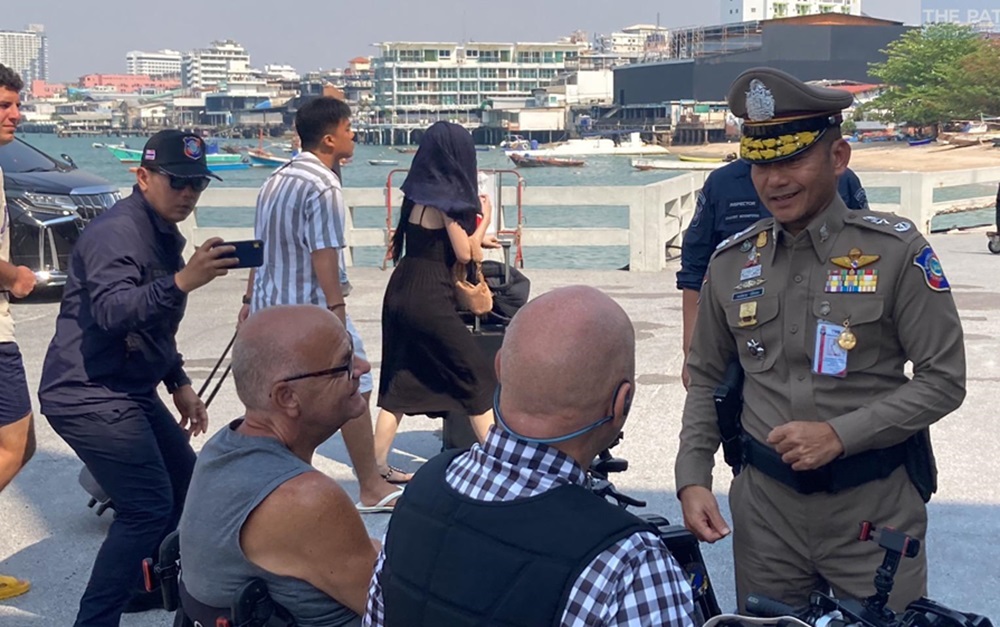
Thailand’s Tourist Police said it is collaborating with embassies from five countries to combat tourist scams and ten criminal gangs in Pattaya. The Tourist Police Bureau, convened a meeting on Thursday Pol Lt Gen Saksira Phuek-am told a press briefing.
Pol Lt Gen Saksira Phuek-am, the Tourist Police bureau commissioner said the participants included ambassadors from South Korea, Ukraine, Russia, India, and Switzerland.
He told the briefing the he had ordered a crackdown on tourist frauds, such as fraudulent or low-quality tour operators and unfair sales of goods and services. Stepped-up operations began on June 19 and will continue until June 25.
He stated that the agency was working with numerous organisations to increase tourists’ confidence in visiting Pattaya.
Gen Saksira spent time on the famed Walking Street speaking with officers on duty and assigned them to seek for members of ten criminal groups known to operate in Pattaya.
Meanwhile, Prime Minister Srettha Thavisin will visit Chon Buri on Saturday to assess the tourism situation. He intends to visit the site of a future Formula One racecourse near Khao Phra Tamnak in Bang Lamung District.
Prime Minister Srettha recently met with Formula One organisers in Italy to examine the potential of including Thailand on the race schedule in the future.
On Sunday, the Prime Minister will pay a visit to Rayong’s U-tapao airport to discuss development on the airport’s land, with the goal of encouraging investment in the Eastern Economic Corridor.
Police Chief Reinstated
In other police news, Pol Gen Torsak Sukvimol has been reinstated as national police chief following the conclusion of an investigation into a highly publicised quarrel, according to Wissanu Krea-ngam, Prime Minister Srettha Thavisin’s counsellor.
Mr Wissanu released the investigation’s findings on Thursday, after the prime minister formed a fact-finding committee chaired by Chatchai Promlert to investigate into the quarrel between Pol Gen Torsak and his deputy, Pol Gen Surachate Hakparn.
The four-month study revealed conflicts and disorder at all levels of the Royal Thai Police, but it was unclear whether these issues arose from a single cause or several causes, according to Mr Wissanu.
The findings revealed that both Pol Gen Torsak and Pol Gen Surachate were involved, with each team contributing to the tensions, he noted.
Mr Wissanu indicated that Pol Gen Surachate was reinstated as deputy national police head on 18 April following his relocation to the Prime Minister’s Office on 20 March. A disciplinary committee was formed to investigate Pol Gen Surachate, and he was ordered temporarily suspended from the police force.
Because there were no further difficulties to explore, it was decided to restore Pol Gen Torsak. He plans to retire on September 30.
On March 20, Mr Srettha abruptly transferred both top police officers to the Prime Minister’s Office in an effort to address the growing schism within the police service.
Kitrat Panphet, Deputy National Police Chief, was subsequently named Acting Police Chief. According to sources, Pol Gen Surachate could face money laundering charges related to online gaming networks.
Source: Bangkok Post
-

 News4 years ago
News4 years agoLet’s Know About Ultra High Net Worth Individual
-
Entertainment2 years ago
Mabelle Prior: The Voice of Hope, Resilience, and Diversity Inspiring Generations
-
News11 years ago
Enviromental Groups Tell Mekong Leaders Lao Dam Evaluation Process Flawed
-

 Health4 years ago
Health4 years agoHow Much Ivermectin Should You Take?
-

 Tech3 years ago
Tech3 years agoTop Forex Brokers of 2023: Reviews and Analysis for Successful Trading
-

 Lifestyles3 years ago
Lifestyles3 years agoAries Soulmate Signs
-

 Entertainment3 years ago
Entertainment3 years agoWhat Should I Do If Disney Plus Keeps Logging Me Out of TV?
-

 Health3 years ago
Health3 years agoCan I Buy Ivermectin Without A Prescription in the USA?